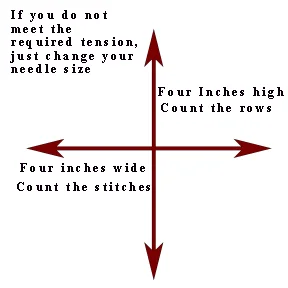Knitting Information
Your Guide to Knitting Techniques and Materials
Knitting is a unique and interesting craft that utilizes various tools, approaches, and techniques that may be confusing for a beginner. Hence, The Knitting Enthusiast created a comprehensive guide to different knitting styles, methods, and materials.
Types of Knitting Yarn
There have been many discussions about which type of yarn should be used for certain projects. Here, I’ve provided information that may help you make a decision. There are eight weights of yarn in the United States:
- Lace (0) – used for lace designs, clothes, and doilies
- Super Fine (1) – used for shawls, socks, and baby clothes
- Fine (2) – used for socks and light sweaters
- Light (3) – also called double-knit (DK) yarn; used for light sweaters, scarves, and tops
- Medium (4) – also called Aran or worsted yarn; used for heavy sweaters, hats, and scarves
- Bulky (5) – also called chunky yarn; used for blankets, sweaters, and chunky hats
- Super Bulky (6) – also called super chunky yarn; used for rugs, jackets, and blankets
- Jumbo (7) – also called super chunky yarn; used for heavy blankets, rugs, and arm knitting
Sentro Knitting Machine
If you are looking for a type of yarn to use with the Sentro Knitting Machine, a worsted‑weight yarn will pair very well with this device. However, you will still have to work the yarn for about ten rows to see which of the three tensions will create the best product.
If you purchase The Knitting Enthusiast yarn, try the tightest tension first and if it looks too tight, then go to the middle choice which is a looser tension. Also remember that there is less stetch in the final product if you use the tighter tension.
Tension Squares
In most patterns, it tells you how many stitches per inch you should create to fit the specified sizes. Tension square ensures you have the correct size based on your chosen pattern.

How It Works
To illustrate, let’s say I have a pattern detailing chest or bust measurements, and the suggested type of yarn is acrylic. It calls for US 3 and US 5 needles.You need to cast on 24 stitches, and in a stockinette stitch (k1,p1), do 32 rows using the US 5 needles.
This should be equal to 4 inches horizontally and vertically. Adjust your needles until you create the correct tension—not too loose and not too tight.
Benefits of Tension Squares
Using a tension square allows you to determine whether the gauged size is correct for your chosen pattern. This enables you to know how many rows and stitches were knitted to get to 4 inches.
Do this by making a swatch that is a little larger than 4 inches. Pin the swatch to a piece of fabric so you do not stretch it while measuring. Then, measure a 4” x 4” part of the swatch using a ruler and count the number of stitches horizontally and the number of rows.
Creating New Swatches
If your number of stitches exceeds the amount suggested for the pattern, this indicates your stitches are too tight. You now need to create a new swatch with a larger needle.
Conversely, if you have fewer stitches than the prescribed number, then your stitches are too loose. Hence, you must create another swatch using a smaller-sized needle.
Discover the Best Knitting Techniques
Reach out to me today for further questions, comments, and concerns about knitting materials and techniques. I look forward to hearing from you.
